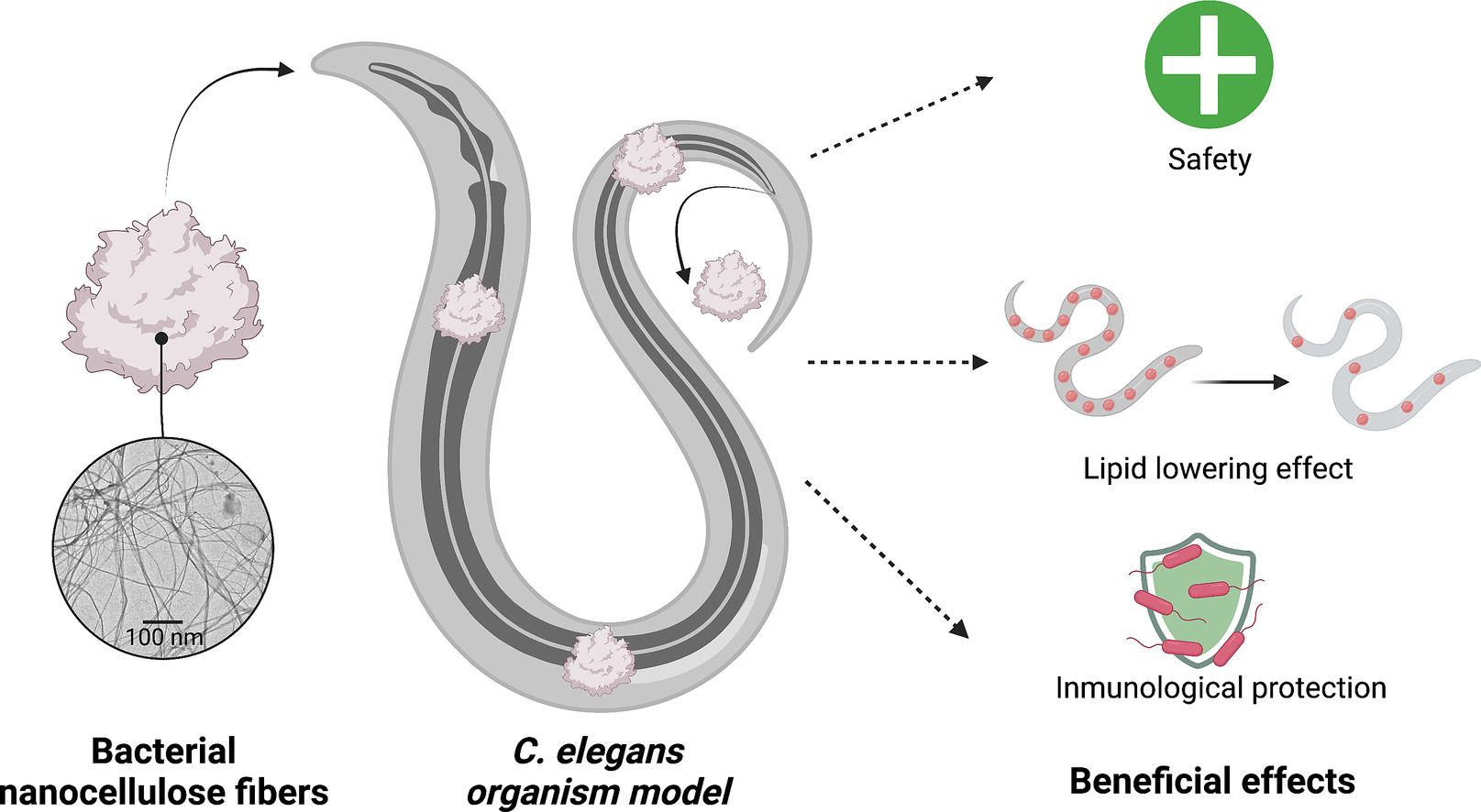
New paper in Carbohydrate Polymers!
The article “Caenorhabditis elegans endorse bacterial nanocellulose fibers as functional dietary Fiber reducing lipid markers” has been published in Carbohydrate Polymers journal.
NN group members Amanda Muñoz and Anna Laromaine have published this paper in collaboration with other researchers from the Baylor College of Medicine in Houston, Centro Nacional de Análisis Genómico (CNAG) and UAB university in Barcelona.
Abstract:
Bacterial nanocellulose (BNC) is a promising dietary fiber with potential as a functional food additive. We evaluated BNC fibers (BNCf) in the Caenorhabditis elegans model to obtain insight into the BNCf’s biointeraction with its gastrointestinal tract while reducing the variables of higher complex animals. BNCf were uptaken and excreted by worms without crossing the intestinal barrier, confirming its biosafety regarding survival rate, reproduction, and aging for concentrations up to 34 μg/ml BNCf. However, a slight decrease in the worms’ length was detected. A possible nutrient shortage or stress produced by BNCf was discarded by measuring stress and chemotactic response pathways. Besides, we detected a lipid-lowering effect of BNCf in N2 C. elegans in normal and high-caloric diets. Oxidative damage was computed in N2 worms and Rac1/ced-10 mutants. The GTPase Rac1 is involved in neurological diseases, where its dysregulation enhances ROS production and neuronal damage. BNCf reduced the lipid oxidative markers produced by ROS species in this worm strain. Finally, we detected that BNCf activated the genetic expression of the immunological response and lipid catabolic process. These results strengthen the use of BNCf as a functional dietary fiber and encourage the potential treatment of neurological disease by modulating diet.
Amanda Muñoz, Anna Laromaine, Bacterial nanocellulose, Caenorhabditis elegans, food additive

